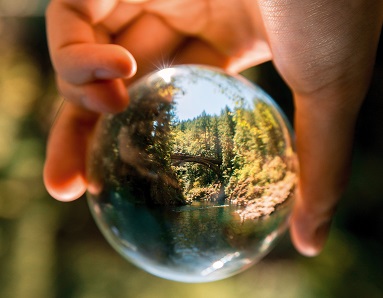Do you know that our brains are like Velcro for negative experiences and like Teflon for positive ones? That is what a psychologist explained to us recently at training for people working with families. The subject was ‘Supporting parents of an anxious child’ and we were being urged to understand that really, our brains are hard-wired to pick up on negativity and that can lead to anxiety.
Research shows that we hold on to negative experiences much more than positive ones – hence the Velcro/Teflon analogy. If we are reading the newspaper or listening to the news, we will take in more information about negative stories than positive ones. Even in daily life if we see or experience something negative, we are much more likely to go home and talk about it to our family than about the positive things that have happened. How often do you go home and tell your family about all the good drivers who let you out of a junction or into a lane? But if someone cuts you off or pulls out in front of you – now there’s a story to tell!
To some extent there is an evolutionary bias to this. At a stage when we may have been seen as prey by animals, or indeed by other tribes, it made sense to be alert to anything which could put our safety and well-being in danger. The amygdala is the part of the brain that is always ready for fight or flight, ready to perceive danger and react. Now, we are less likely to be eaten by a bear but the amygdala can still be overly sensitive and reactive, particularly when it is fed on a rich diet of negativity.
It is easy to be negative. There is an energy to it. We all know the negative energy that gossip generates. It can be a fascinating conversation but it is at someone else’s expense and the act of indulging in gossip gives the story extra energy and carries it further out into the community possibly even with a few new embellishments. No wonder Pope Francis regularly warns against gossip.
Jesus invites us to be salt of the earth, a light on a lampstand, yeast in the dough, to be people who rejoice in the little things like a lost coin that is found. He is inviting us to a way of looking at the world, a way that celebrates the goodness of creation and sees every individual as created in the image and likeness of God. That is a challenge. He is asking us to go against the flow.
How do we do that? It is vital that we are informed about what is happening in the world but we need to be careful of getting sucked into the constant negativity of some stories which can wear us down and elevate our stress levels. So, for example on the environment, yes, we need to face the challenges but we also need to seek out the positive things that are being done. This is particularly important for children. It is easy for them to be overwhelmed with stories of environmental catastrophe which can create serious levels of anxiety for them. We need to help them to respond with positive action. Media and social media thrive on the negative story. We need to counteract with the positive.
And that’s the challenge, to actively choose the positive. That may mean letting go of a judgmental thought before it becomes a statement. It may be choosing silence rather than letting loose the witty but cutting remark. Awareness that our children soak up everything they hear may urge us to discuss and explore difficult experiences or frustrations in life without descending into negativity. Challenging!
We are invited to develop a reflective, discerning heart. Negative and positive energy take us on different paths. Which one are we choosing?


 Bairbre Cahill
Bairbre Cahill
